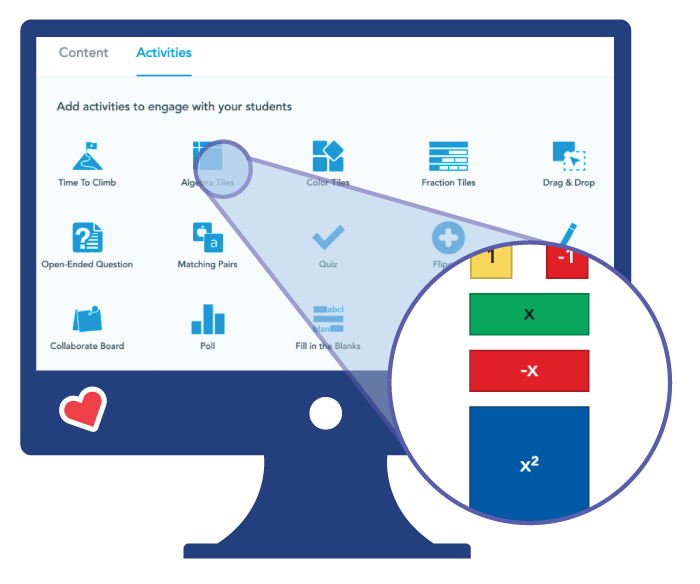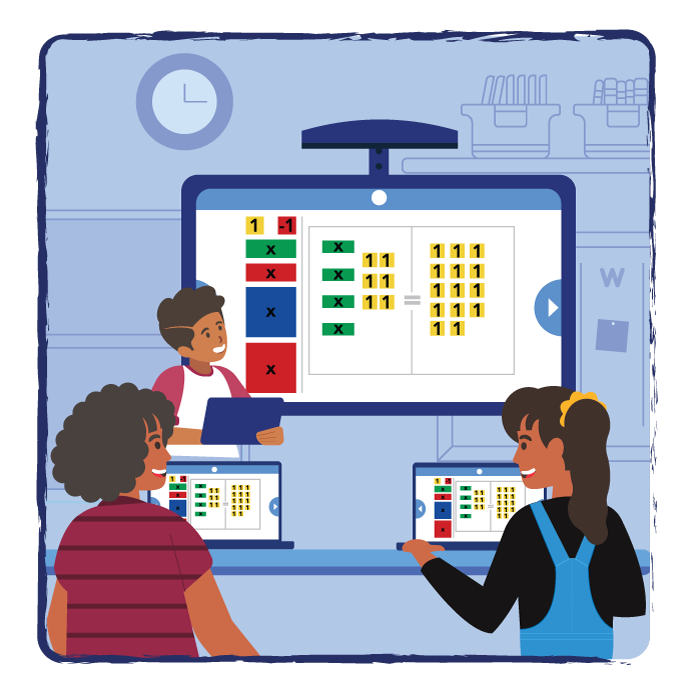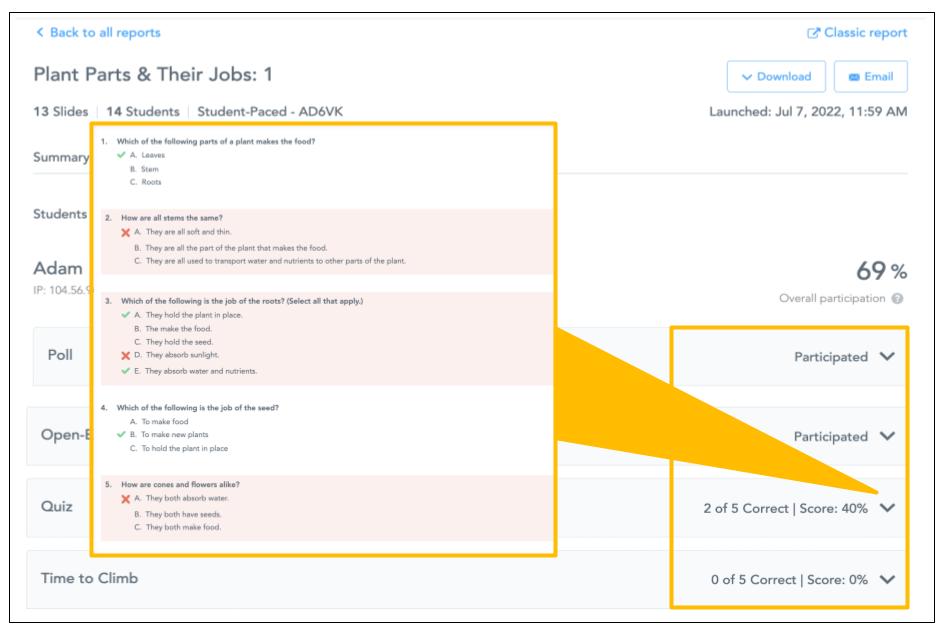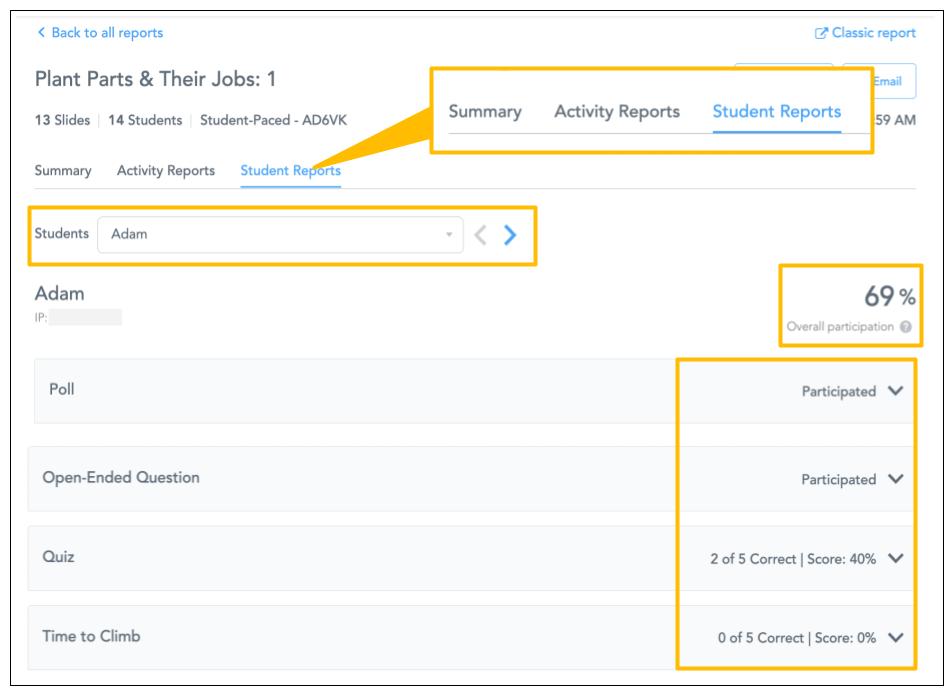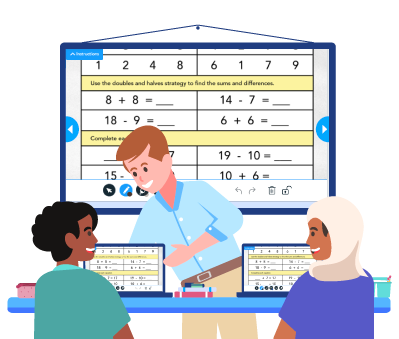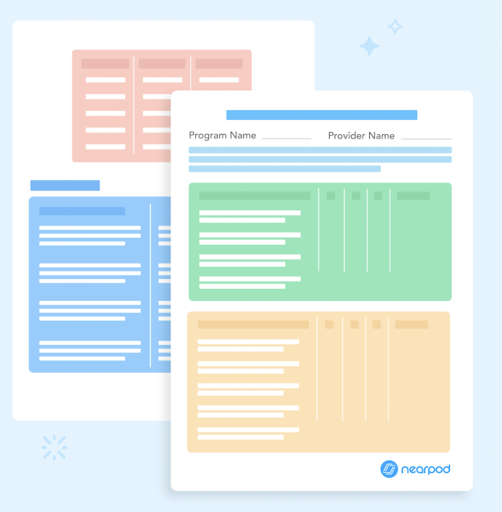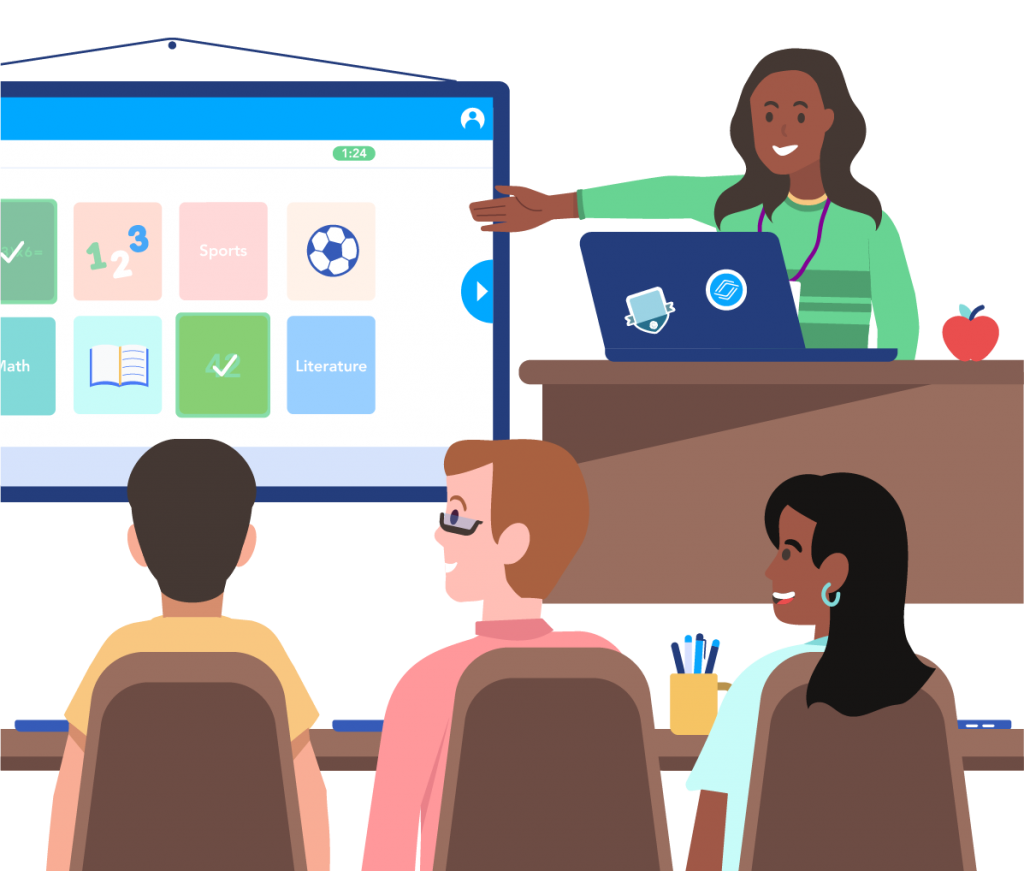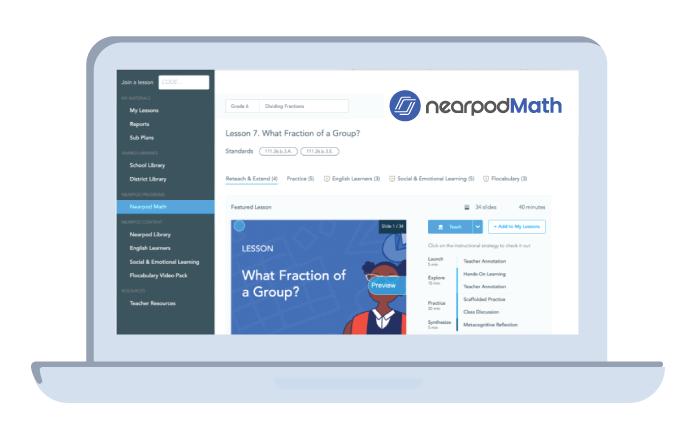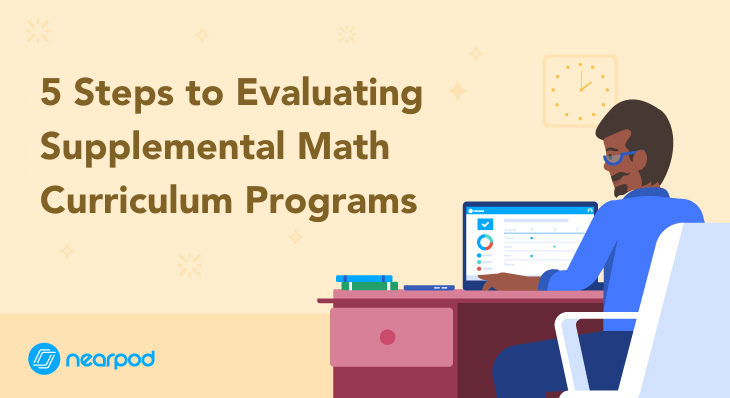
5 Steps to Evaluating Supplemental Math Curriculum Programs
Adopting supplemental math curriculum materials is one of the most impactful decisions administrators, and curriculum coordinators make. Instructional materials influence student engagement, assessment practices, lesson delivery methods, and teachers’ underlying pedagogical practices and efficacy.
Using the five steps and evaluation rubric below, administrators can thoughtfully evaluate supplemental curriculum programs and ultimately invest in the resource that best supports both teaching and learning.
5 Steps to Evaluating Supplemental Math Curriculum Programs
Step 1: Rank evaluation criteria
Amongst a landscape of hundreds of supplemental math teaching resources, the only way to carve the path forward is to get clear on what is important to your teachers and best for your students from the start. Create a team of decision-makers representing diverse and well-balanced perspectives, including administrators, teachers, and instructional coaches. The evaluation team should rank the following categories from most to least important: program organization, content/pedagogy, reporting, lesson delivery, and training/support.
If it is tough, and it may be, ask tough questions:
- Is it more important that teachers can navigate through the program’s organizational structure with ease or that there are professional development and teacher support resources?
- Are the standards alignment and mathematics pedagogy more critical than the program’s assessment capacity?
- Do teachers most value a program that assists with engaging lesson delivery and differentiation?
Not all categories of evaluation criteria will hold equal weight for your district, so it is important that team members discuss and establish shared priorities from the onset of curriculum evaluation.
Step 2: Define what teachers and students need
To get a clear picture of the “best fit” supplemental math curriculum resource, the evaluation team should identify specific “look-fors” to define observable targets and indicators that embody and align with district priorities. The more specific the “look-fors”, the easier it will be to gauge how potential supplemental math programs measure up. We advise developing 3-6 “look-fors” for each evaluation criteria category outlined in step one. No “look for” is more or less correct or incorrect. They depend on the many different factors that comprise your district.
Program’s organization in terms of a supplemental curriculum program’s organization, what are the “look-fors” that best capture your teachers’ priorities?
- Is the content logically organized so they can easily search and access supplemental resources?
- Do teachers give precedence to programs that incorporate accessibility for English Language Learners and students with disabilities?
Even if this category ranks low on your list of priorities from step one, it is still important to collaboratively develop these indicators as it may be the differentiating factor between two contending supplemental programs.
Program’s organization
Regarding a supplemental math curriculum program’s organization, what are the “look-fors” that best capture your teachers’ priorities?
- Is the content logically organized so they can easily search and access supplemental resources?
- Do teachers give precedence to programs that incorporate accessibility for English Language Learners and students with disabilities?
Even if this category ranks low on your list of priorities from step one, it is still important to collaboratively develop these indicators as it may be the differentiating factor between two contending supplemental programs.
Content and Pedagogical Offerings
What priorities concern a potential supplemental curriculum resource’s content and pedagogical offerings? This category is often a critical component of math educators. They want to ensure that supplemental resources align with their standards, personal mathematical teaching philosophies, and district initiatives around mathematics education. What “look fors” best describes teachers’ pedagogical priorities in a supplemental resource?
- Does the resource build conceptual understanding and procedural fluency, emphasizing strengthening students’ mathematical habits of mind?
- Are there real-world connections and explicit problem-solving instruction?
- To address the unfinished learning caused by the pandemic, does the resource provide plentiful lessons and activities designed for differentiation at all student readiness levels?
Reporting
With data-driven instruction continuing to inform many districts’ strategic plans, it is critical to examine how potential supplemental curriculum resources can assist teachers and administrators with reporting. The “look fors” in this category can depend on the core curriculum that has already been adopted, the age range of students, district grading initiatives, and many more variables.
- Does the resource include adequate opportunities to assess and report student progress in real-time and after a lesson?
- Are there built-in opportunities for teachers to gather information to support meaningful differentiation?
- Can administrators view and actively use data?
The team should define indicators that paint the “ideal” picture, being cautious not to undermine their vision during this evaluation phase.
Lesson Delivery
A potentially differentiating factor for supplemental math curriculum adoption centers around a program’s lesson delivery methodology. This component will arguably most directly impact teachers on a day-to-day basis. It is important to make teachers’ voices predominate in these “look fors.”
- Is it critical that your supplemental resource has the ability to deliver synchronous and asynchronous lessons seamlessly?
- Is it a priority that the program offer resources suited for various instructional formats, including whole and small group instruction, independent practice, and collaborative group work?
- Do teachers value multimedia, including videos, games, songs, math manipulatives, etc.?
Hone in on what most closely addresses both teacher and student needs in your district.
To develop “look fors” in step two, use our evaluation checklist and rubric. This resource was specifically made for supplemental math curriculum adoption but can be used as a starting point or template for other subject areas. The evaluation checklist and rubric can be used throughout evaluating supplemental curriculum programs by providing the clarity needed to support meaningful evaluation, dialogue, and analysis.
Step 3: Implement a strategic evaluation
The real test of the quality of instructional materials is the learning they support in the classroom. Thus, it is recommended that curricular resources be evaluated by teachers when possible. Evaluation processes should be clearly outlined for all stakeholders. It is recommended that the process, on the whole, be developed and shared with participating teachers and staff in detail. Developing a folder on Google Drive or a HyperDoc to house information on the evaluation process will help teachers feel more comfortable and prepared.
To get started, decide how the curricular resource will be introduced; ideally, targeted training sessions will be held before and during the evaluation. Next, you will need to set the evaluation duration and expectations for how often teachers should use the tool during the evaluation. If your district has support staff such as instructional coaches, it is a good idea that they hold at least one observation of the teacher implementing the curricular program.
We recommend evaluating teachers to complete our evaluation checklist and rubric to reflect uniformly on the program’s strengths and weaknesses. By ranking each criterion using numerical indicators and measuring the resource’s performance across many categories, decision-makers can have meaningful dialogue. The final aspect to consider is how to solicit student input. We find student input is invaluable in evaluating curriculum programs. In addition to the teacher evaluation tool, you should also develop a way by which students can share their thoughts.
Step 4: Analyze evaluation results
During the analysis phase, the decision-making team and evaluating teachers should discuss the supplemental curriculum resource’s affordances and limitations. The strength of using a checklist and rubric is that it provides qualitative analysis of different criteria and promotes guided discussion around critical evaluation categories. Ultimately, the decision-makers and administrators can gather each teacher’s rubric, compile the data in a central location, and, using student input and instructional coach observations, make a collective decision on whether to adopt the supplemental curriculum resource.
Step 5: Refine implementation
If the evaluation went well and your team decided to adopt the curriculum, your job is not quite over! Teachers implementing the supplemental math curriculum program will need additional training and opportunities to check in with their peers. We recommend scheduling at least one additional training and/or Q&A session and meetings where teachers can share their tips/tricks with one another and reflect on implementation. If your district has instructional coaches, we recommend that these staff members receive additional professional learning to provide the expertise and support needed to teachers who may benefit from more personalized assistance with implementation.
It is a good practice to re-evaluate supplemental curriculum programs regularly. Has the supplemental program led to improved student engagement? Has adoption helped teachers with instructional planning? Have student mathematics scores changed since implementation? What is the district implementation rate, and how can administrators work with coaches to ensure more fidelity? Re-evaluating the curriculum is not just about determining whether this curriculum continues to align with district needs. It is also about discovering if you can provide additional support to teachers to ensure the curriculum is implemented with fidelity.
The importance of implementation
What if your team did not implement the supplemental program after the evaluation? This is possible if the feedback from the evaluation was predominantly negative and/or it was discovered that the supplemental math program had unworkable deviations from district expectations. Suppose teacher evaluation in step four was done with consistency. In that case, the next steps will involve getting clear on the pain points students and teachers experienced with the supplemental curriculum program and identifying additional supplemental programs to evaluate that address these pain points.
Suppose your team of decision-makers believes that the negative feedback is not substantial enough to move to another potential program. In that case, the next steps might include more professional development around the resource and subsequent rounds of evaluation. Either way, it is important not to get down if the feedback is less than ideal. Rather, it is a unique opportunity to continue to find ways to support your teachers best.
Find a math curriculum that’s right for your school
Adopting supplemental math curriculum resources is an impactful decision for administrators, teachers, and students. The process should be carefully planned from start to finish. You can make an informed, measured decision by giving teachers and students a voice and ensuring diversity of perspective on your decision-making team. Using our evaluation checklist and rubric is a great way to get a “head start” and ensure curriculum evaluation and adoption are data-driven and consistent. Charter your path forward with a simple goal: to help your teachers take on the most important job in the world.
Interested in reading more about this topic? Learn about Nearpod Math, a supplemental K-8 math program that provides the content, tools, and organization teachers need to create daily, engaging math learning experiences that maximize outcomes for all learners. Featuring:
- 5,000+ new standards-aligned lessons, videos, and practice activities
- Exclusive virtual manipulatives
- Enhanced course navigation and reporting
References:
[4] https://www2.ed.gov/about/offices/list/oese/sst/evaluationmatters.pdf]

Brittany is a former math educator who brings her love of mathematics education and passion for instructional technology to her role as a Nearpod Math product specialist.


